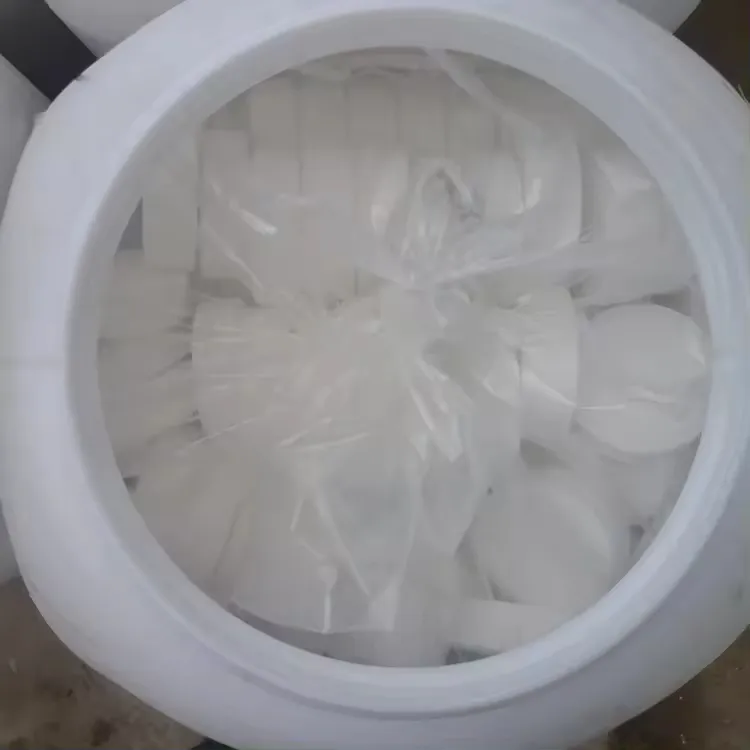



chemical formula for sodium chlorate
The Chemical Formula for Sodium Chlorate An Insight into its Composition and Applications
Sodium chlorate is an important chemical compound with the formula NaClO₃. It is widely used across various industries, including agriculture, paper manufacturing, and as a disinfectant. Understanding its chemical structure and properties can provide valuable insights into its multiple applications and significance in everyday life.
Composition and Structure
The chemical formula of sodium chlorate consists of sodium (Na), chlorine (Cl), and oxygen (O) atoms. Specifically, the ionic compound is formed by one sodium ion (Na⁺) and one chlorate ion (ClO₃⁻). The chlorate ion itself is made up of one chlorine atom covalently bonded to three oxygen atoms, where the chlorine is in the +5 oxidation state. This distinct structure endows sodium chlorate with its unique chemical properties.
The molecular geometry of the chlorate ion is trigonal pyramidal, influenced by the presence of lone pairs of electrons on the chlorine atom. This shape is crucial as it affects how the compound reacts with other substances. Sodium chlorate is a white, crystalline solid that is soluble in water, making it easy to handle in various applications.
Production Process
Sodium chlorate can be synthesized through the electrolysis of a sodium chloride (NaCl) solution. The process involves passing an electric current through the brine, leading to the formation of sodium hypochlorite (NaOCl) and subsequently, sodium chlorate. The overall reaction can be summarized as follows
\[ 6 \text{NaCl} + 3 \text{H}_2\text{O} \rightarrow 2 \text{NaClO}_3 + 4 \text{HCl} + 2 \text{NaOH} \]
This method not only produces sodium chlorate but also generates hydrochloric acid and sodium hydroxide as by-products, illustrating the interconnected nature of chemical processes.
chemical formula for sodium chlorate

Applications
Sodium chlorate plays a pivotal role in several sectors. One of its primary uses is as a herbicide, particularly for controlling unwanted vegetation in crops. It works as a non-selective herbicide, meaning it kills most plants it comes into contact with. This property is especially useful in agricultural practices where weeds can hinder crop growth.
In the paper industry, sodium chlorate is used as a bleaching agent. It aids in the production of elemental chlorine dioxide, which is an effective bleaching agent for wood pulp. The use of sodium chlorate in this context contributes to the production of high-quality paper while minimizing environmental impact compared to other chlorine-based bleach processes.
Furthermore, sodium chlorate is utilized in the field of water treatment. It serves as a disinfectant for drinking water, helping to eliminate pathogens and ensure the safety of water supplies. This application highlights sodium chlorate's role in public health, as clean water is fundamental to preventing waterborne diseases.
Another interesting use of sodium chlorate is in the manufacturing of explosives. It can be combined with other chemicals to produce mixtures that have explosive properties, making it valuable in mining and demolition industries.
Safety Considerations
While sodium chlorate is beneficial in many applications, it is important to handle it with care. It is a strong oxidizing agent, meaning it can react vigorously with combustible materials, posing fire hazards. Therefore, proper storage and handling protocols should be observed to mitigate risks.
Conclusion
In summary, sodium chlorate (NaClO₃) is a versatile chemical compound with significant applications in agriculture, industry, and public health. Its unique chemical structure and properties enable its use in various fields, underscoring the importance of understanding chemical formulas and their implications. As industries continue to evolve, sodium chlorate will likely remain a key player in the advancement of sustainable practices and technologies.
-
Why Sodium Persulfate Is Everywhere NowNewsJul.07,2025
-
Why Polyacrylamide Is in High DemandNewsJul.07,2025
-
Understanding Paint Chemicals and Their ApplicationsNewsJul.07,2025
-
Smart Use Of Mining ChemicalsNewsJul.07,2025
-
Practical Uses of Potassium MonopersulfateNewsJul.07,2025
-
Agrochemicals In Real FarmingNewsJul.07,2025
-
Sodium Chlorite Hot UsesNewsJul.01,2025










